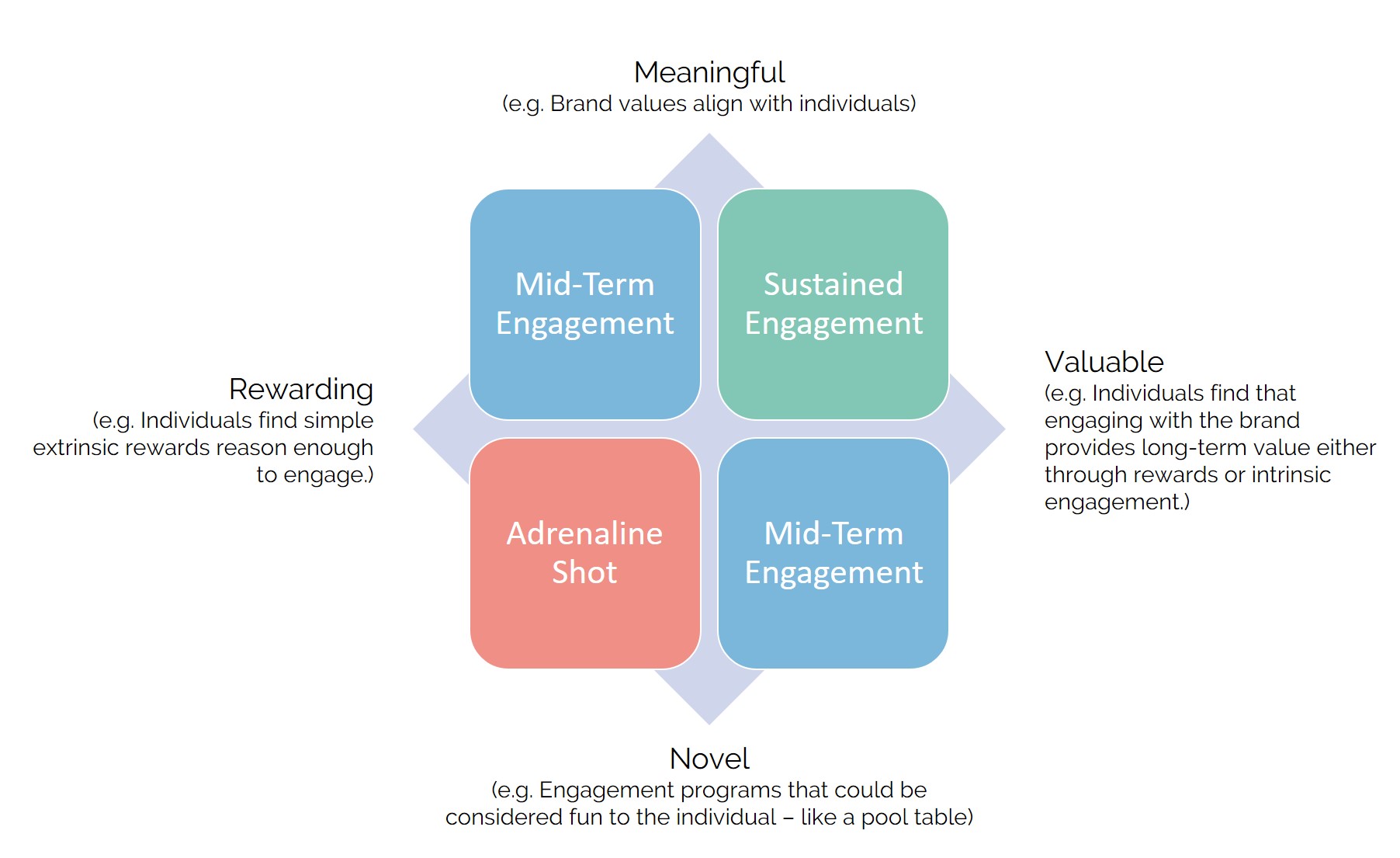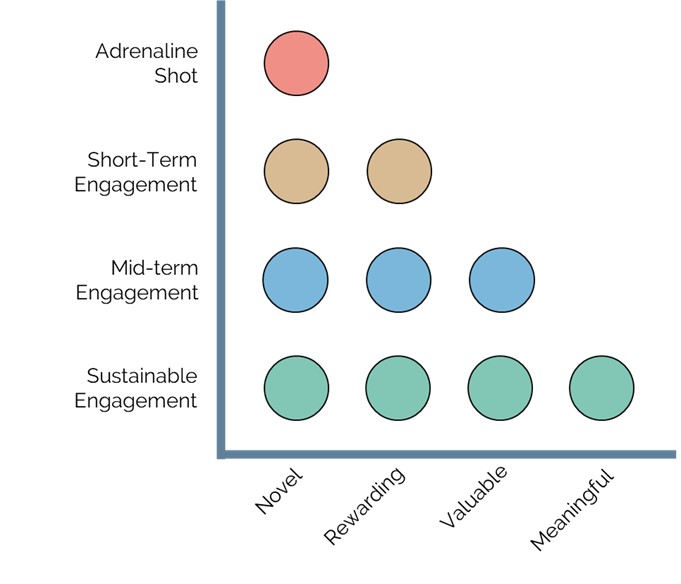All relationships take some effort if you want them to work. The relationships we have with brands, our workplaces, or the community around us, are no exception. Originally, these relationships were purely transactional. “If I show up 9-5, I’ll get paid”. “I go to the shops to buy food or clothes”. Brands then learnt that profitability lay in convincing people to buy more than one item of clothing a year, and employers came to see that their employees held much more potential for innovation and development when they felt motivated to go beyond the basic 9-5 expectations. Nurturing the connection or perception that people had of a brand, business or organisation became much more beneficial to encourage heightened participation or performance.
However, today, there are countless options, distractions, recommendations, and information available to audiences which has provoked a shift in their expectations. One-way, push-engagement is no longer enough. Audiences need more empathetic, authentic and relevant prompts from brand communications in order to earn their trust and loyalty, knowing that they do not have to settle for a poor experience.
To really stand out and survive the ebbs and flows, the key is in building sustainable engagement, sustainable reactions and sustainable participation – whether you are trying to attract customers, encourage employees or inspire citizens. Experiences that create a positive, lasting emotional attachment that drive people to return, trust, commit, and act.

For example, the key to sustaining customer engagement, as with employee engagement or civic engagement, is to put the customer at the centre of the experience. Given how much customer data and information is collected today, it is completely fair to expect brands to repay the trust the consumer places in them by using that insight to create greater value in their everyday experiences, touchpoints, and interactions. Provide meaningful rewards for customer support, patience, and loyalty when it feels right to them, not only once they’ve spent money. Provide omnichannel experiences that demonstrate personalisation, relevance, and how the brands values align with what is important to the consumer, all contributing to a deeper, emotional connection and a greater likelihood of sustained advocacy and business. Reflecting a world where expectations are shifting, on average around 71% of consumers consider it important that brands uphold values that they have an emotional attachment to.
You can make meaningful, sustainable change that looks and feels innovative for everyone involved without diverging from company objectives, but that crucially addresses what your employees are telling you.
In the workplace, the challenges may feel different but the person-centric approach to sustaining engagement does not change. According to Gallup, up to 85% of employees are disengaged with work. Employee Engagement has held a range of definitions over time, encapsulating everything from Ping-Pong Tables, Taco Tuesdays and Friday Drinks, to running surveys, to renovating office spaces with biophilic design. All positive steps in the right direction for fostering communities and making the workplace somewhere positive to belong. But we would argue not meaningful, not really engagement, and definitely not sustainable. We categorise these gestures as ‘adrenaline shots’ that work to temporarily boost good feelings, but as with a sugar rush, can lead to a crash afterwards. It may seem a generous and forward-thinking idea, but it is often a poorly planned “knee-jerk” reaction that fails to address the deeper issues that may be affecting the feelings of the employees or why there may be a low level of engagement. Ping-pong won’t encourage employees to go the extra mile at the end of the month every month or help them understand the collective company goals. Sustained experiences that support how they work, tackle issues they have raised in employee surveys or make processes easier to take on, go towards making employees feel you’ve taken time to see what usually slows them down or causes a disconnect.

What all sustainable engagement shares at its core is the need to create user centric experiences that they find meaningful and valuable. They need to feel that they are understood, trusted, listened to and that any kind of reward, be it intrinsic or extrinsic, is tailored to their specific wants and needs, not just a generic token. Striking the correct balance is not easy, it requires a deep understanding of the individual at the centre of the experience as well as a way to deliver the experience. It is also not a one-shot, one-size fits all solution. You need to view engagement as a long-term strategy rather than a one-off quick-fix novelty if you want to deliver on business objectives and change behaviours.
But once you’ve cracked the equation, it’s a wheel that will keep turning, sustainably supporting where you need to go.
This piece was created in collaboration with Epion and also appears on their blog found here.









